 By FAY REN
By FAY REN
A wave of COVID-19 was sweeping across the country as I travelled back to China in May for three weeks, my first visit since the pandemic.
The route taken was slightly eccentric, entering the country via the North Western Khorgos land border crossing between Kazakhstan and the Xinjiang Autonomous Region, making my way across the country through Chongqing (central China) to end the trip in Shanghai, where I flew back. Since this trip was personal in nature (personal travel plus family duties), this piece constitutes more a recollection of anecdotal observations rather than a formal, macro analysis.
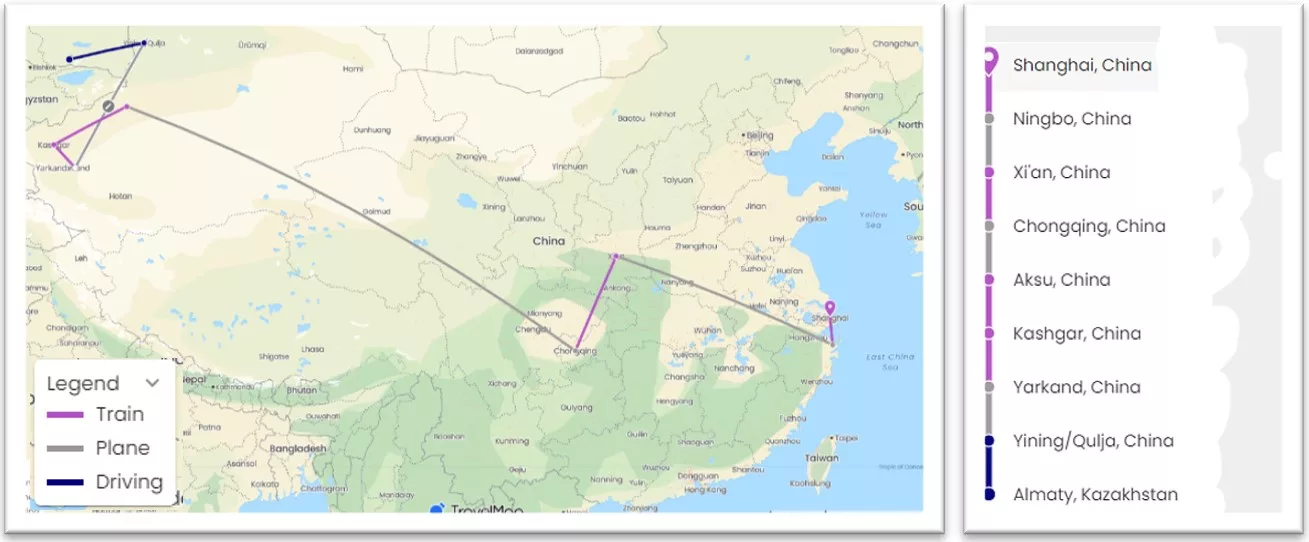
Prior to boarding the flight, I downloaded all the apps I needed for the parallel universe that exists on the other side of the bamboo firewall, since Google and the like no longer function so well within China. Notably my wallet did not come with me. It is possible to function perfectly well without credit cards or cash.
My cache of Apps included the following:
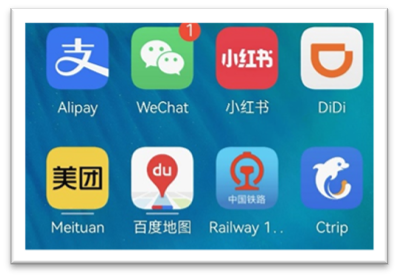
Alipay/WeChat – payments + communications
RED – TripAdvisor + Instagram + Tiktok + Esty
Didi – Ride hailing
Meituan – Takeouts/restaurant booking & reviews
Baidu Maps – because Google doesn’t work
Ctrip/12315 – flight/train/hotel bookings
Initial impressions were dominated by a reminder of the sheer size of the country. Xinjiang occupies one sixth of China’s total land area (imagine taking a 3 hour internal flight without leaving a province) with changing landscapes from snow-capped mountain ranges of Tianshan in the north to the vast Taklamakan desert and the Pamir highlands in the south. Its long border, neighbours eight different countries, which contributes to its sparse but diverse minority ethnicities. For those who are itching to travel but still hesitant to go overseas, its wild west nature makes it rather an exotic and attractive tourism destination for inland habitants, who are flocking over as the summer high season approaches.
Luckily for me, in May the high season hadn’t begun just yet and I did not have to endure the traffic jams and exorbitant hotel prices in June:
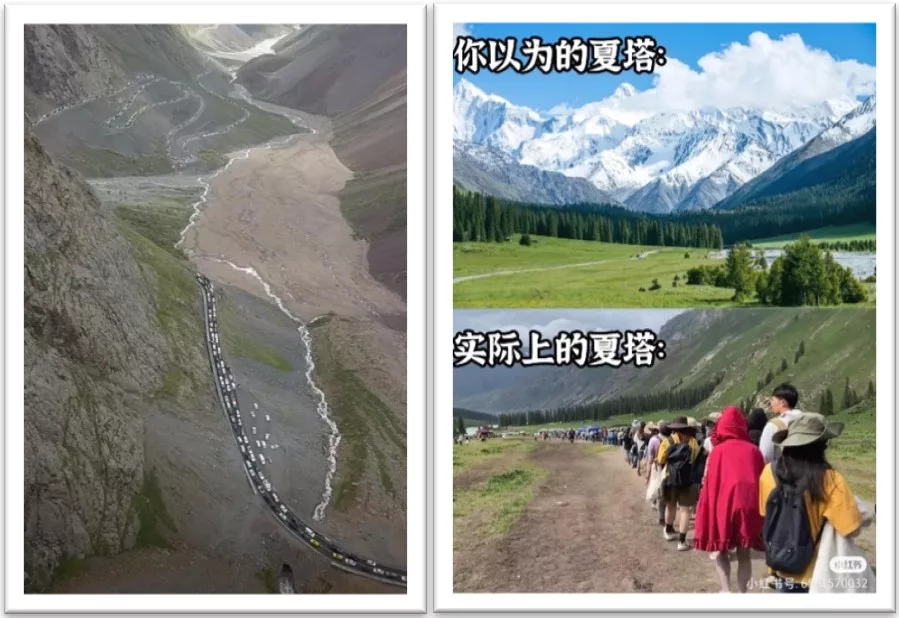 [Taken from Chinese social media: Traffic jam on the Duku Highway (left) & what you think you get (top right) vs. what you actually get (bottom right)]
[Taken from Chinese social media: Traffic jam on the Duku Highway (left) & what you think you get (top right) vs. what you actually get (bottom right)]
After being cooped up for 3 years, low hanging fruits of re-opening in the form of travel, dining out, and entertainment are the most ubiquitous areas of pursuit. Inter-provincial train tickets are hard to obtain (the national ticketing system thankfully provides a waiting list to fill in any cancellation slots), and popular restaurants and bars always require queuing or pre-order via QR codes and mini apps. The numerous music festivals and concerts that have been halted over the past 3 years are making a huge re-entrance. Tickets gone within seconds.
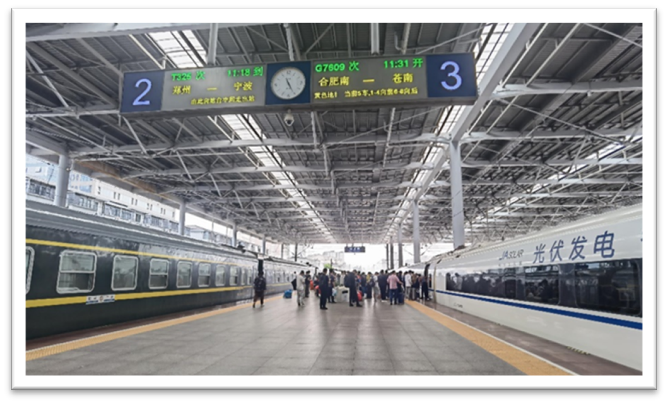 [Ningbo station platform: old generation slow train (left) vs. new generation bullet train (right)]
[Ningbo station platform: old generation slow train (left) vs. new generation bullet train (right)]
Cash strapped local governments are seeking innovative ways to revive their local economies. Zibo, a little-known tier 3 city in the province of Shandong, made a name for itself on Douyin (TikTok equivalent) during the May national holidays for its street barbeques and hospitality, attracting millions of visitors. The mayor created special ‘BBQ bus routes’, brought in famous artists and performers to entertain the guests, and made sure no price gouging occurred, drawing praise from across the nation.
The mood of the populace, however, is still somewhat muted.
Pent-up savings are not being deployed much outside the aforementioned leisure activities. The generous stimulus cheques and lobbying from trade unions over pay that is a feature of many Western nations are not a feature in China. Still recovering from the aftermath of a Covid-shaken economy, facing anxieties over job security, shrinking real wages, a declining property market and haemorrhaging investment returns from volatile stock markets, confidence had been severely dented for both ordinary folk and entrepreneurs alike. The latter has suffered additionally from the various regulatory crackdowns that have taken place over the last few years. Caution prevails and this is hampering both spending and investment.
China is a large and complex country and paradoxes exists in many places.
In the labour market, high youth unemployment contrasts with widespread discrimination against over 35s on the job market. College graduates are cheap and abundant, conflicting with a shortage of skilled blue-collar workers in the manufacturing sector. Parents who put an enormous amount of effort into their children’s education do not want to see them end up in a factory, thus creating a dilemma in mismatched skillsets. Retirement age in China is 55 for women (or even 50 for civil servants) and 60 for men, which will almost surely increase as the population ages. Reskilling the workforce and accelerated efforts to increase automation penetration, in both services and in industry, is one way to address this labour shortfall, in the long-term.
In consumption, there is a bifurcation where both upgrades and downgrades are simultaneously occurring, given the increasingly large wealth gap. Middle class feeling the squeeze are trading down from Tmall/JD to the cheaper Pinduoduo. Even social media influencers are promoting ‘rational spending’ as opposed to the ‘buy buy buy’ mantra of earlier days. The mid-year 618 shopping event is losing steam as e-commerce platforms shy away from disclosing Gross Merchandise Values (GMVs). On the other end of the spectrum, queues outside Louis Vuitton, Chanel and Hermes in high-end malls are still long and winding.
Even despite the softness of consumer appetites, new trends are being formed.
Local brands are becoming more prevalent. A wave of new age consumer brands, having learnt from the best MNCs, understand the importance of selling a narrative to build brand image, with an increased focus on quality and aesthetics. Price points are ticking closer to international peers in some categories.
Beneunder, a brand selling (next level) sun protection gear, from apparel like jackets using cooling anti-UV performance material to accessories like polaroid sunglasses, has become the biggest player in this niche category with >RMB2bn of sales in H1 FY22. The market is large as north Asian women do not like to tan, where UV is perceived as the ultimate culprit to aging.
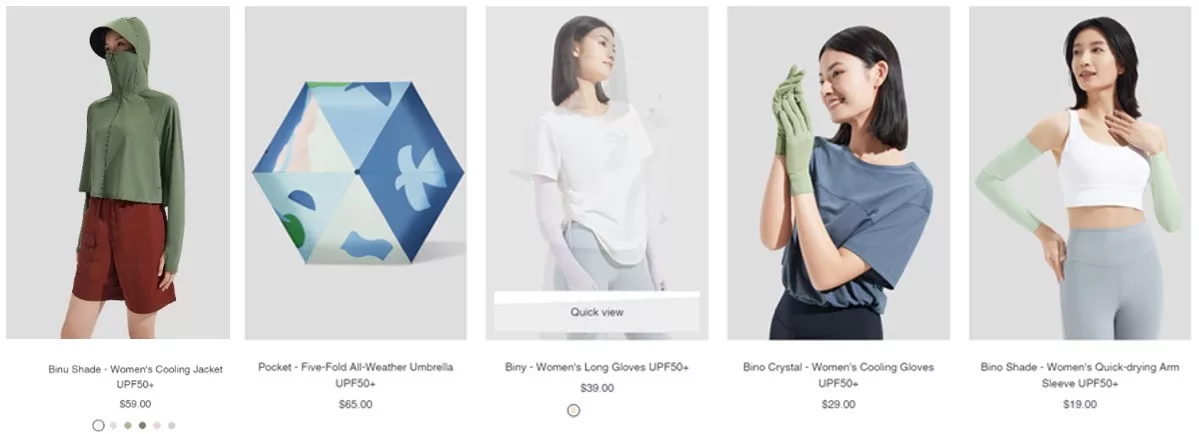 [Beneunder’s US website, prices in USD]
[Beneunder’s US website, prices in USD]
A higher public health consciousness post-Covid is prompting more participation in sports and outdoor activities such as camping, hiking, and skiing, to the benefit of sports brands like Anta and Li Ning, and a host of gear makers looking to cash in on the opportunity.
Chinese branded electric vehicles are also popular and gaining acceptance. More of my Didi (a Chinese version of Uber) trips were made in an EV than a traditional combustion engine vehicle. The ride experience was very comfortable indeed. Despite the price war initiated by Elon Musk, Chinese EVs remain one of the few areas where exports are still robust, surpassing Japan to become the biggest auto exporter globally in May.
The sharing economy that survived the boom-bust era is now finding a rational market. Sharing bikes and scooters still line the streets, rental power banks are stationed inside restaurants, cafes, shops, and tourist photo hotspots, to the convenience of TikTokers and Apple users.

What is surprising (at least to me) upon this visit was the widespread sighting of the numerous types of service robots that roam restaurants and hotel corridors for catering and room service (all the while muttering happily to itself), and in the reception halls of banks and hospitals to aid services. Autonomous robo-cars are delivering packages in residential compounds, and even taking over police patrol on the streets.
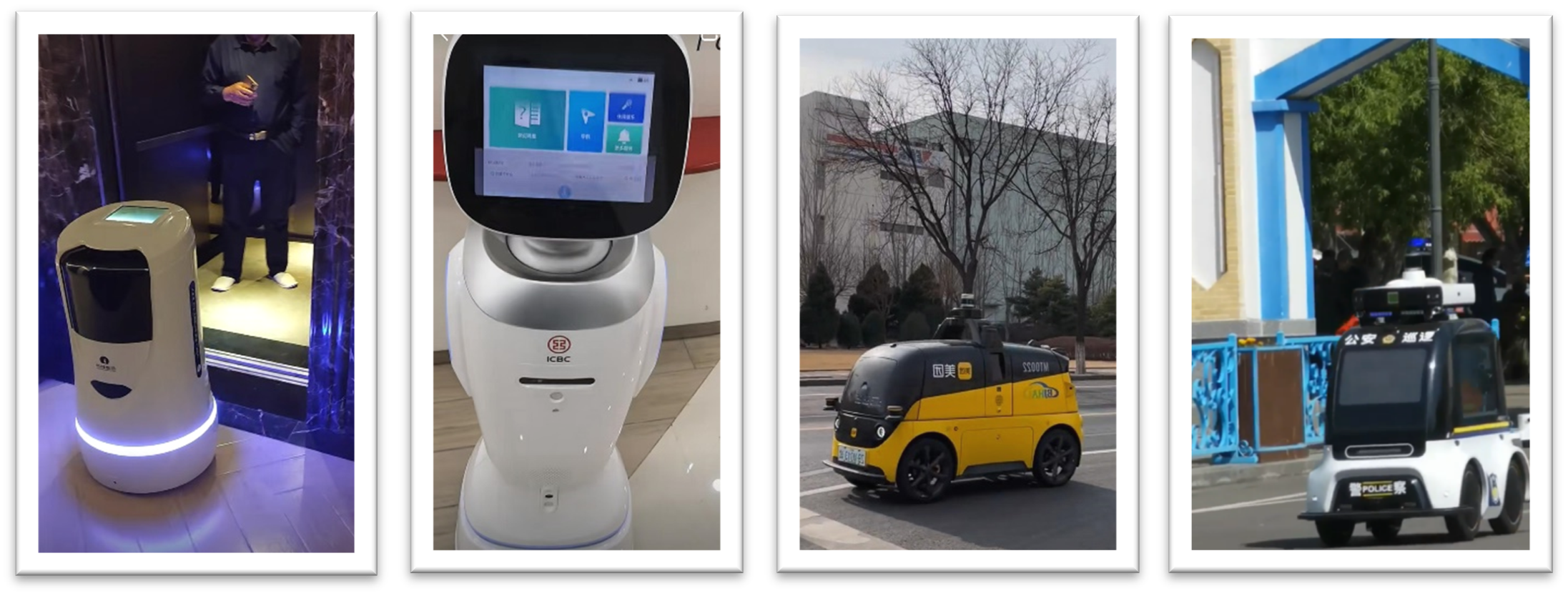 [From left to right: hotel room service robot, ICBC bank service robot, Meituan delivery robot, police patrol robot]
[From left to right: hotel room service robot, ICBC bank service robot, Meituan delivery robot, police patrol robot]
The dining experience is almost fully digitalised and contactless.
I did not handle a single paper menu in restaurants on this entire trip. Order is made through a unique QR code for the table, and payment completed via another scan at the end of the meal, can be operated by multiple persons. No more trying to catch the attention of the waiter/waitress, and embarrassingly pretend to scratch your head when the attempt failed. This is a blessing to the introverts of the world.
 [in shop restaurant ordering (left) & bubble tea takeout interface (right)]
[in shop restaurant ordering (left) & bubble tea takeout interface (right)]
Although over-digitalisation can also create frustrations at times. Luckin Coffee (the chain is very much still alive post Muddy Waters’ short campaign in 2020) no longer takes order in person over the counter, even if the cafe is empty. The barista at the till politely requests you to order through your phone instead. While the government regards it a criminal offence for refusal to accept cash Renminbi, many shopkeepers still use the ‘no change’ excuse to avoid this inconvenience. For the elderly generation untrained on the mobile economy, it can be intimidating on many levels.
Despite all the obstacles over the last three years on progress, society has not stood completely still. Visiting China in the past has always been an experience of discovery as things morph constantly, this time was no exception. While policymakers have a lot on their plate to contend with, and outlook still cloudy in many ways, people will always find a way to move forward.
My investment conclusion is that, short of more comprehensive stimulus, the Chinese economy will continue to negatively surprise. Against that, the Beijing authorities do have some comprehension of the wider economic and societal challenges so we should scrutinise future policy announcements more for their potential positive impact rather than the negative implications that have dominated the past few years.
Finally, James Spence asked me to feature “dish of the trip” and here it is….
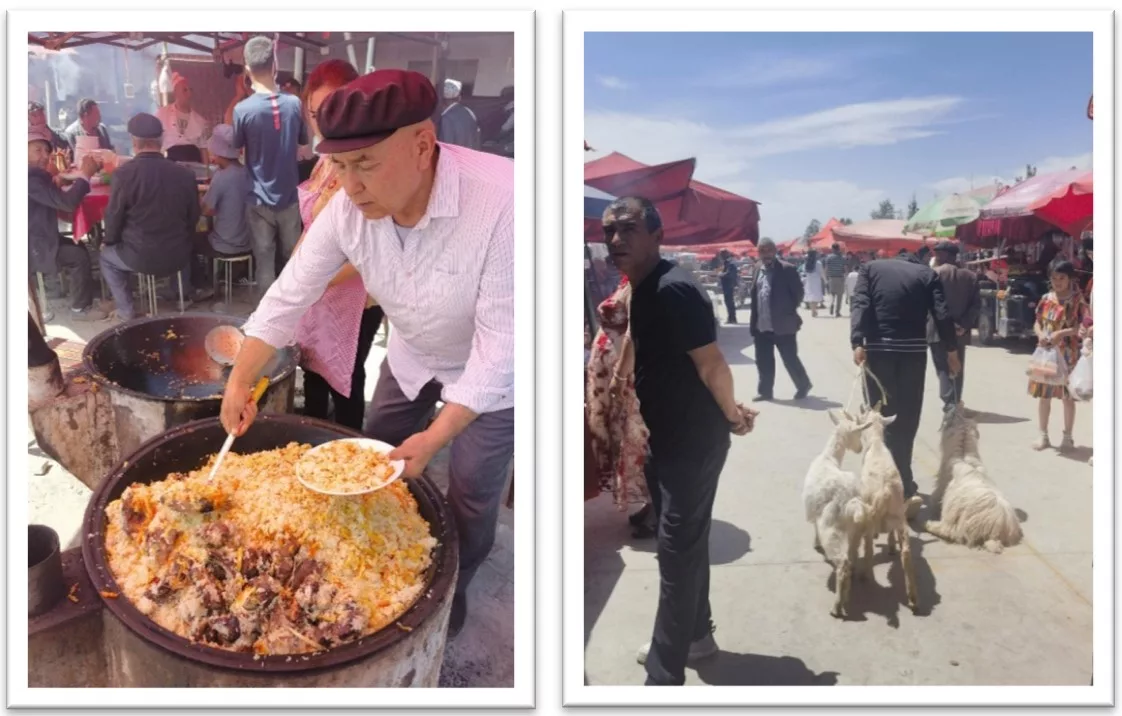 Pilaf/Plov/手抓饭
Pilaf/Plov/手抓饭
A common rice dish served across Central Asia with many regional varieties. In Xinjiang, this dish shares more similar to Uzbek style. Rice is simmered in a rich stew of meat and vegetables in a large cooking cauldron until all the liquid has been absorbed. The meat in this case is mutton, and the vegetables are pre-fried onions, garlic, and carrots. The final dish is garnished with sprinkles of pomegranates , raisins, or pickles.
This particular meal was served in a market stall next to the Sunday livestock bazaar outside the city of Yining, in Northen Xinjiang, where sheep and cows are auctioned and traded every week. I was told to give it a visit by a local, claiming that the pilaf and lamb skewers are the best and freshest there is in the city (as implied in the photo on the right…).


